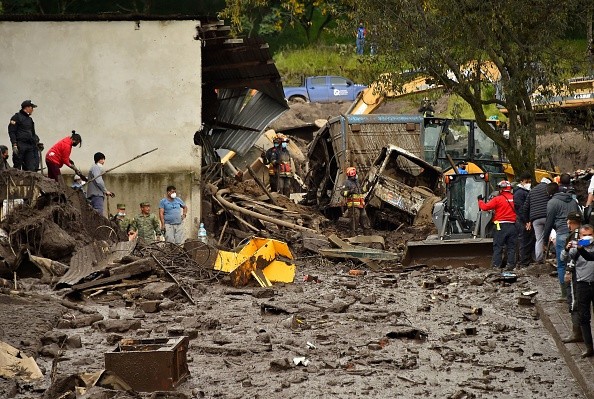On Monday, heavy rainfall led to a deadly landslide in Quito, the capital city of Ecuador, leaving parts of the region engulfed by mud.

Torrential Rainfall Wreaks Havoc in Ecuador
According to AccuWeather, no less than 22 deaths and 47 injuries were recorded after the massive landslide with twenty people still unaccounted for.
The Pichincha volcano, which lies just west of the city, was partially loosened as a result of the floods. At an altitude of 1,500 feet, the slide was so powerful it rapidly engulfed the residents of the La Gasca neighborhood with mud and debris.
Floodwaters washed away cars and left people stranded in their houses as torrential rains added to the muck and debris on the ground.
The injured were transported swiftly by emergency crews, while other crews cleaned the way so that no one was put in danger. Many roadways in the affected area were completely obscured by a thick layer of mud.
According to Al Jazeera, the Ecuadorian National Police sent out a special operations team and an intervention and rescue team to help with the recovery attempts.
Quito, Ecuador's capital and largest city, is located in the northern part of the country and is prone to heavy rains.
It's typical for this time of year in Ecuador to see daily rain and thunderstorms, said AccuWeather Senior Meteorologist and Lead International Forecaster Jason Nicholls of AccuWeather.
Rainfall Observations Recorded Across Ecuador
As of Monday, a number of the "normal" showers in Ecuador had become all-out deluges, causing widespread flooding.
Nicholls said Monday's rain was spread out around the city, but the strongest rainfall was found in the western half. West of Quito, anyone can see the Pichincha volcano and several other high peaks.
According to Al Jazeera, local authorities in Quito's La Gasca area reported that up to 3 inches (75 millimeters) of rain fell in just a few hours. Santiago Guarderas, the mayor of Quito, Ecuador, claimed Monday's rainfall was a "record figure" not seen since 2003.
At Quito's Mariscal Sucre Quito International Airport, a little more than 11 inches (280 mm) of rain fell during the month of January. Those who live near the east side of the city were spared the worst of Monday's storm.

Efforts to Save Victims
In Ecuador, excessive rains have displaced hundreds of people since October - about 2,800 people.
The police and fire departments were assisted by dozens of soldiers in their search and rescue activities, which were still underway early on Tuesday. Many people were treated for hypothermia after wading through knee-deep mud, according to rescuer Cristian Rivera.
Heavy gear has been dispatched by the city of Quito to clean streets and repair a water collection system that has collapsed. As a result of the flood, many residents in the impacted areas of town were left without electricity.
Climate scientists say that as the atmosphere warms, more water will be held in the atmosphere, increasing the likelihood of heavy rains around the planet.
Related Article : Dozens Killed, Hundreds of Thousands Displaced After Torrential Rain Hit São Paulo
For more news, updates about torrential rainfall and similar topics don't forget to follow Nature World News!
© 2026 NatureWorldNews.com All rights reserved. Do not reproduce without permission.





